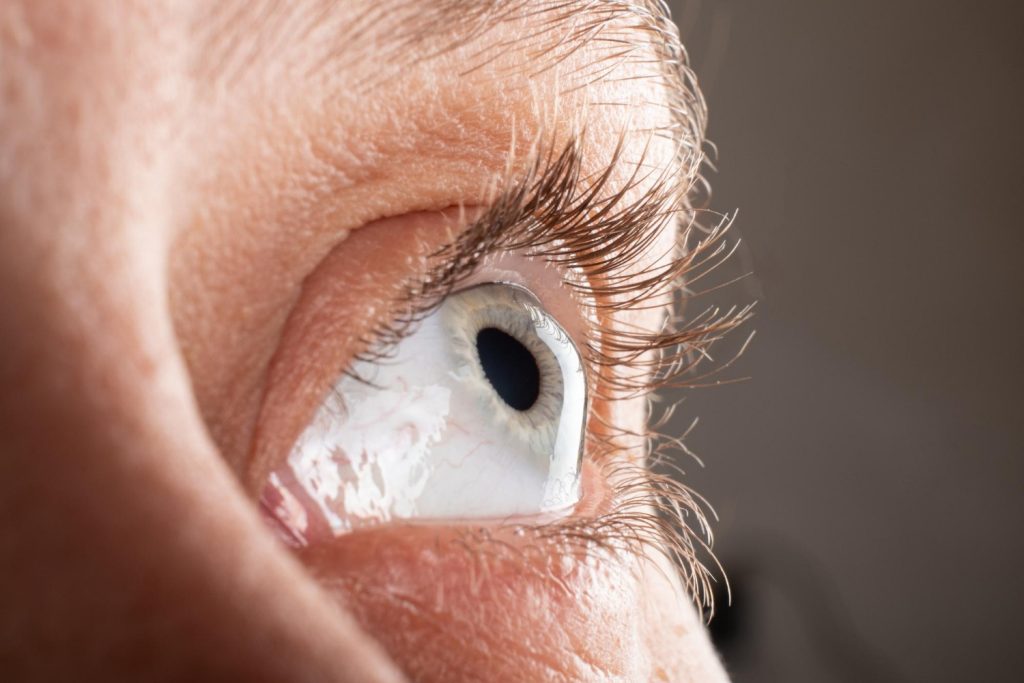
טיפות דמעות – מה זה ולמה משתמשים בהן?
טיפות דמעות הן תמיסות רפואיות או קוסמטיות שמטרתן להקל על
Anterior uveitis is the most common form of uveitis, which is an inflammation of the uvea – the middle layer of the eye consisting of the iris, the ciliary body and the macular layer.

The uveal complex provides most of the blood supply to the retina. When inflammation occurs in the front part of the uvea, especially the iris or ciliary body, the anterior inflammation is called anterior uveitis. Anterior uveitis is an inflammatory condition affecting the front part of the eye, leading to pain, sensitivity to light, redness and impaired vision.
While the exact cause of anterior uveitis remains unidentified in many cases, there are several causes and risk factors that have been identified including:
1. Autoimmune conditions: diseases such as ankylosing spondylitis, sarcoidosis, inflammatory bowel disease or rheumatoid arthritis may also cause ocular involvement.
2. Infections: Bacterial, viral, fungal or parasitic infections such as herpes, tuberculosis and toxoplasma can lead to anterior uveitis.
3. Trauma: direct injury or trauma to the eye can cause inflammation.
4. Cancer: Rarely, cancer such as lymphoma can affect the eye, and lead to a condition that mimics uveitis.
Symptoms of anterior uveitis can develop suddenly and may progress rapidly.
Common symptoms include:
1. Eye pain.
2. Eye redness.
2. Blurred vision or decreased vision.
3. Sensitivity to light (photophobia).
4. Small and irregular pupil.
5. Drones, tiny dark spots or threads floating across the field of vision.
Diagnosing anterior uveitis requires a comprehensive eye examination by an ophthalmologist specializing in uveitis.
This test includes:
1. Slit lamp examination to examine the front part of the eye.
2. Pupil dilation test to check the presence of inflammation in the back of the eye.
3. Measuring eye pressure: inflammation can affect intraocular pressure and is therefore important to perform.
4. Comprehensive blood tests and various serology tests. These can help identify inflammatory diseases or systemic infections.
5. Ocular and systemic imaging tests when necessary.
The goal of treatment is to reduce inflammation, relieve pain and discomfort, prevent tissue damage and restore vision. Common treatments include:
1. Corticosteroid eye drops: these are the main means of treatment to reduce inflammation in anterior uveitis. They are usually given with high frequency at the beginning of the inflammation with a gradual decrease in the dose.
2. Dilating eye drops: these drops, such as cyclopentolate or tropicamide, relieve pain by relaxing the muscles of the iris and the ciliary body, and they also prevent the formation of scar tissue and adhesions of the iris.
3. Oral steroids or steroid injections near or inside the eye. In severe cases, or when eye drops are ineffective, oral corticosteroids or injections around the eye may be required.
4. Immunosuppressive drugs: For patients who do not respond sufficiently to corticosteroids or need long-term treatment, drugs that suppress the immune system, such as methotrexate or azathioprine, can be effective or new biological treatments.
5. Antibiotics or antiviral drugs when infection is the cause of inflammation.
Regular monitoring by an ophthalmologist specializing in uveitis is essential, as untreated or inadequately treated anterior uveitis can lead to complications such as glaucoma, cataracts, iris adhesions or retinal edema.
Although not all forms of anterior uveitis can be prevented, understanding potential triggers and properly managing systemic inflammatory diseases can reduce the risk. Some preventative measures include:
1. Regular eye exams: regular visits to the eye doctor can help in early detection and management of the disease.
2. Proper management of systemic inflammatory diseases: Conditions such as rheumatoid arthritis, inflammatory bowel disease or spondylitis should be treated appropriately to reduce the risk of uveitis.
3. Wearing goggles during hazardous activities can prevent traumatic injuries leading to uveitis.
4. Maintaining good hygiene: washing hands regularly and avoiding contact with people with contagious eye infections can help prevent infectious causes of uveitis.
Anterior uveitis can cause significant vision risks and discomfort if left untreated. Through a combination of awareness, timely medical intervention and appropriate treatment, the effects of this condition can be significantly reduced. Whether you are a patient diagnosed with the condition, or someone interested in understanding more, recognizing the importance of early detection and treatment can be essential to maintaining optimal eye health.
The author of the article is Dr. Yael Sharon

טיפות דמעות הן תמיסות רפואיות או קוסמטיות שמטרתן להקל על

ויטמין C הוא אחד הוויטמינים החיוניים ביותר לבריאות העיניים, הודות

מרכז מומחים לאבחון וטיפול מתקדם בתסמונת העין היבשה ומחלות פני שטח העין















